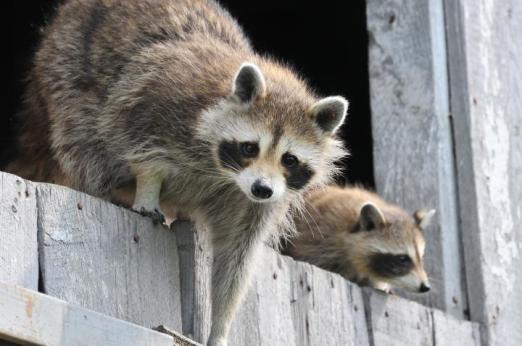Skunks are notorious for emitting a pungent smell as a defense mechanism once they are confronted. According to animal handlers from Baystate Wildlife, to see one in your backyard could be surprising, and the last thing you should do is panic or try to hurt it. Here are steps you can take in case you find yourself in the same space as a wild skunk.

Don’t kill it. When you see an adult skunk in the premises of your home, it probably has babies in its nest hiding nearby. Not only do you endanger its younglings, but you’ll also most likely be sprayed, it as it could feel threated with your presence. Stay calm, walk away and call an animal handler like Baystate Wildlife to help you remove the animal.

If you get sprayed, have a cleaning solution ready. If you get sprayed by a skunk, don’t panic. Wash your eyes and off your face as soon as you can, and try your best not to touch anything because whatever you touch will also smell. Neutralize the chemicals by mixing one quart of 3 percent hydrogen peroxide, one teaspoon of mild dishwashing detergent, and ¼ cup of baking soda. Rinse, wash, and repeat.
Baystate Wildlife removes raccoons, skunks, bats, and squirrels gently, as the last thing the catchers would do is to hurt them. After the removal, the catchers will safely bring them back to the wild where they belong and are free. With over a decade of experience in the field, Baystate Wildlife goes above and beyond clients’ expectations. For more helpful articles like this, visit this page.








 Squirrels are furry, little creatures roaming parks, forests, and sometimes an occupied home. People feed and try to pet them, yet they are still considered wild animals. And while they may seem good candidates as pets, they should be kept out of the house.
Squirrels are furry, little creatures roaming parks, forests, and sometimes an occupied home. People feed and try to pet them, yet they are still considered wild animals. And while they may seem good candidates as pets, they should be kept out of the house. If there are baby squirrels in the attic, wait for them to grow before evicting them. When adult squirrels find it hard to leave a house, it’s possible that they have built a home in the attic for their babies. There’s a chance for them to roam around and leave once the babies have grown enough to follow their mother. If this doesn’t happen, it’s best to ask for help from professionals who can find a new home for the family.
If there are baby squirrels in the attic, wait for them to grow before evicting them. When adult squirrels find it hard to leave a house, it’s possible that they have built a home in the attic for their babies. There’s a chance for them to roam around and leave once the babies have grown enough to follow their mother. If this doesn’t happen, it’s best to ask for help from professionals who can find a new home for the family.






